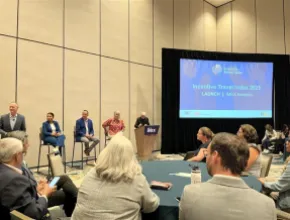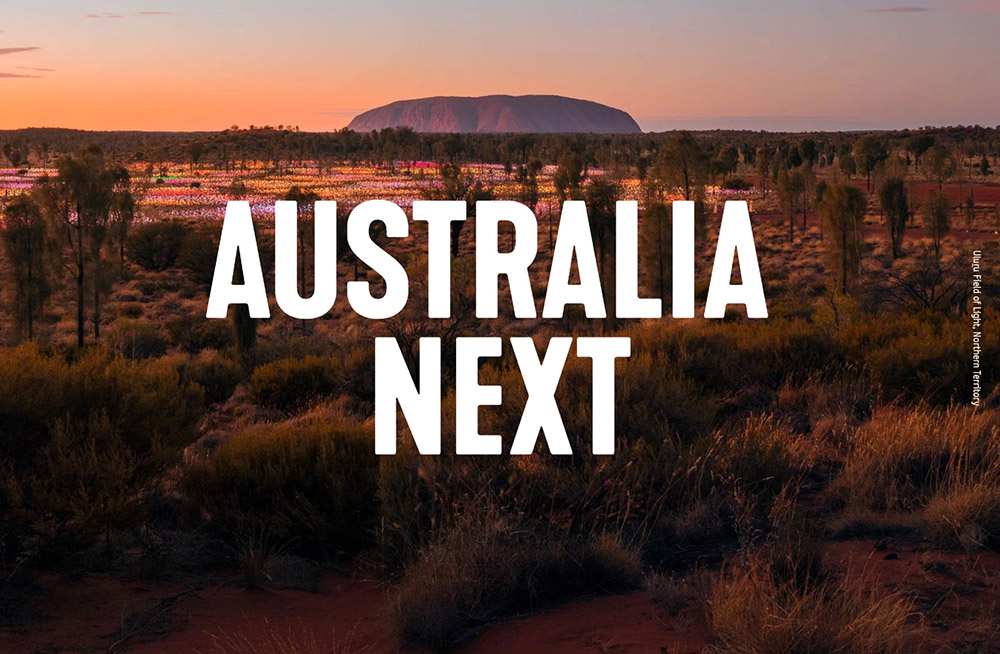
Australia’s Impressive Outdoor Event Spaces and Up-and-Coming Incentives Destinations
When the COVID-19 pandemic is behind us, companies will be eager to reward their employees with unforgettable incentive programs. Australia has always fit the bill for wow-worthy trips—and there’s plenty more incredible experiences waiting for North American-based attendees, from dinners under the stars at Uluru to life-changing expeditions over the Great Barrier Reef.
To learn more about the current COVID-19 situation in Australia and what inspired outdoor event ideas and under-the-radar destinations await for future incentives, we caught up with Tourism Australia’s Mary Ann McDonald in this episode of the Meetings Today podcast.
*This podcast was created in partnership with Business Events Australia. All photos are courtesy of Business Events Australia.
Listen to learn more about the first issue: Australia Next: New Properties and Incentive News From Australia’s Crystalbrook Collection
- Resources from Australia: See Business Events Australia’s Coronavirus information for business events page which provides guidance on where to find the latest information about what is permitted for gatherings in each Australian state and territory and how venues, hotels and other business events products and services are adapting their offerings for COVID safety.
- Inspiration from Australia: Read the second edition of Australia’s incentive inspiration magazine Australia Next.
[Start Transcript]
Danielle: Welcome to the Meetings Today podcast. I’m Danielle LeBreck. Today, I am checking in on the meetings, events and incentives industry in Australia. For those of you actively planning future incentive trips, be sure to check out the recently released second issue of Australia Next, which is a magazine for North American-based incentive planners published by Business Events Australia. In it, you can bookmark ideas for destinations, properties, activities and more for future incentive trips.

Here to help us understand the current status of incentives and meetings in Australia around COVID-19, the trends happening on the ground and which Australian destinations we can expect to be hearing more about in 2021 is Mary Ann McDonald. Mary Ann is the business events manager for the Americas for Tourism Australia and works with North American-based planners as they organize meetings and incentives in Australia. Thank you so much for speaking with me today, Mary Ann.
Mary Ann: Oh, thanks for the opportunity, Danielle. It’s great to catch up with you.
Danielle: So first off, how is the current COVID-19 situation in Australia and have business events and meetings restarted there?
Mary Ann: Well, the COVID-19 situation in Australia right now is looking positive. Right now, at the time of recording, there are less than 100 active cases in the whole country. So, COVID has been managed extraordinarily well in Australia, which is great. And yes, business events and meetings have restarted there.
Australia’s businesses are reopening and meetings are restarting in most parts of the country. Melbourne’s restrictions are easing and Sydney can host business events for up to 300. Perth, which you visited, has been hosting 900 guests. And the Brisbane Convention and Exhibition Centre just hosted a very large event for 1,800 people in October. It was the AFL Grand Final, which is normally held down south. It’s a huge sporting event. That’s all very positive.
To help planners with who are looking at Australia for future events, visit Business Events Australia’s website. We have a dedicated page on our website called COVID Information for Business Events. It’s to be updated regularly. That page includes all of the links and the information in terms of venue capacities, the states reopening the borders and all that sort of stuff within the country. That will give you the tools and the information that you need if you are proposing events for the future so that you can confidently talk to your clients about sending a group to Australia in the future.
Danielle: There is some activity restarting it sounds like. What sort of events are you seeing move forward there? Are they smaller, more regional? That seems to be the theme in other places around the world where we are seeing some activity.
Mary Ann: Well, in terms of the ones I just mentioned, in terms of the numbers and things within some of the big cities—that’s what’s happening in states where there have been consistently low or no case numbers in they’ve not had locally acquired cases in over two months. So they’re having larger events. And some states don’t have any cap on numbers. What we found, though, too, is that regional destinations are benefiting from this as well. So, yeah, it sort of depends, and some of them are smaller. But you know, some of them are actually quite large.
Danielle: And would you say the majority of these, are they corporate events, incentives? Is there any sort of theme there?
Mary Ann: We’ve done some research amongst the domestic corporate decision makers around their attitudes towards restarting events and the results are really encouraging. So for businesses that are planning events in Australia in the next six to 12 and 12 to 24 months, both of those percentages are both up from when we did the research in August, because of the way the situation has been handled and the numbers are way down. So they feel confident that they can book events in Australia.
Danielle: Because of how this pandemic has been going and how the virus travels through the air, I know at Meetings Today through some of our reporting, we’ve seen an uptick in interest in outdoor meeting and events. There’s ample room to spread out if needed, and there’s a higher comfort level with being out in the fresh air. Australia I know has no shortage of great outdoor spaces, and I think this is going to be a trend that we’ll see for a while even after the pandemic is over. So I’m wondering if you can highlight some of your favorite outdoor spaces for our North American-based listeners that they should keep in mind and research as they plan future events and incentive trips in Australia?
Mary Ann: Oh, Danielle, that’s like asking who’s my favorite child. As you know, Australia has a really good climate for outdoor events, and many parts of the country are warm enough to host outdoor events all year round. Australia is a very temperate country, though the center is mostly desert. The coasts are much more temperate. It’s not like we have the snowy seasons like we do here in North America, where a lot of the country is blanketed in thick snow for most of the winter. So you can feel confident to book outdoor events most of the year in most parts of the country.
Some of the ones that you can book. You can choose dinner under the stars at Uluru, that’s formerly called Ayers Rock. It’s the large, red dome rock that you see on many images. That’s spectacular—it’s in the middle of the desert and basically in the center of the country. And there are a couple of options that you can take there. There’s Sounds of Silence dinner, which is a large-scale event. And you can also take a self-guided tour through Field of Light, if you’d like to in that area. There’s also Tali Wiru, which is a much more intimate event, and it’s a fantastic dinner still within view of Uluru and based on a sand dune, so both of those are great outdoor venues.
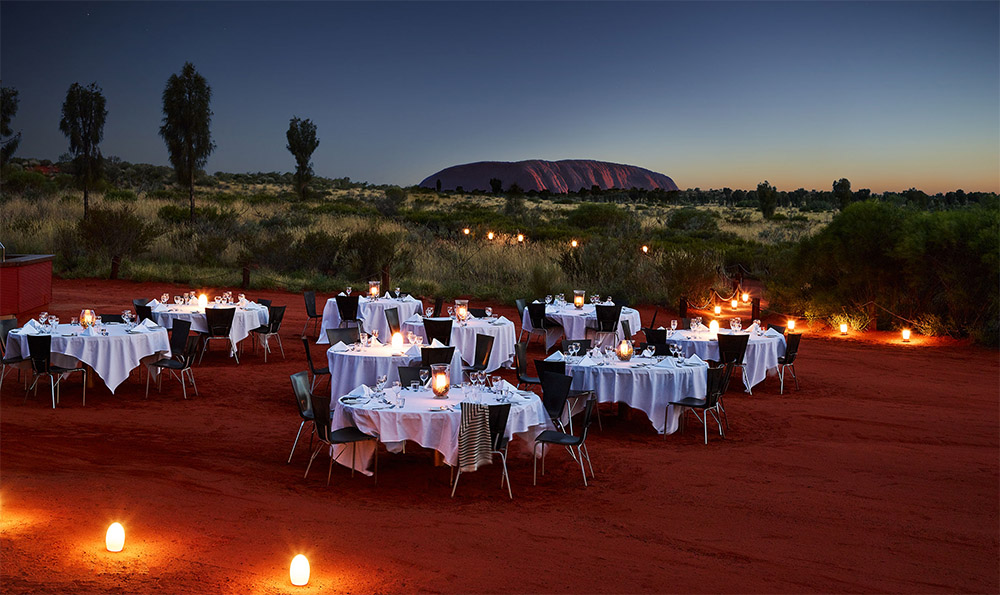

There’s the Gold Coast, which is in Queensland on the east coast of Australia. There, is the Home of the Arts, which has a new outdoor stage, which is fantastic. And then Melbourne (Melbourne is a large sporting capital, amongst other things in Australia), hosts the Australian Open, which is the first Grand Slam of the International Tennis circuit. And so that’s held every year, and you can actually book dinners on the court. And you can have the roof open which effectively makes it an outdoor venue if you like.
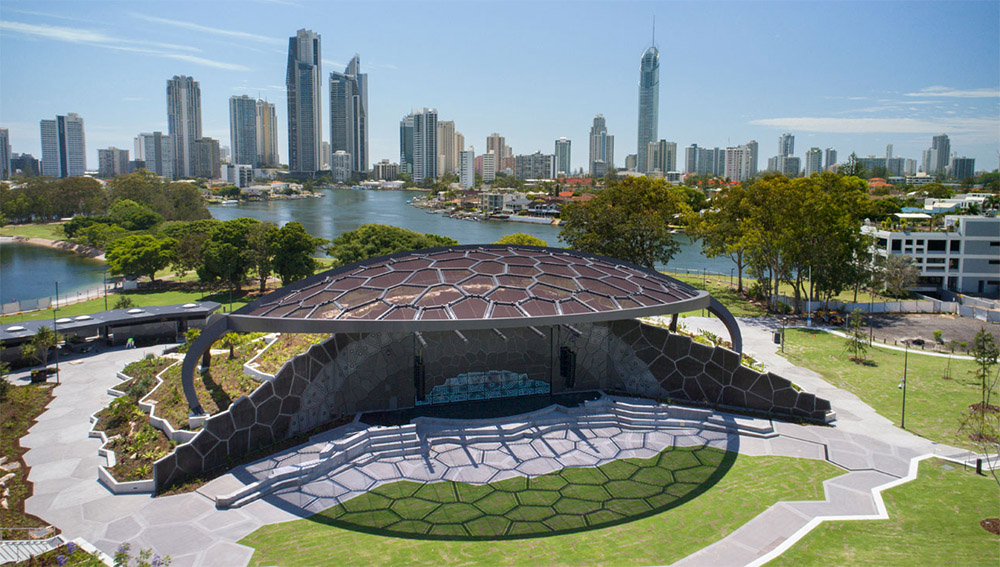
Another one, which you would be familiar with, is Taronga Zoo in Sydney. Taronga Zoo overlooks Sydney Harbor, as you know, and there’s a new venue there called the Gili Rooftop, and it’s got incredible views of Sydney Harbor, the bridge and the Opera House and everything. All of those are beautiful outdoor venues that people should actually look into.

Danielle: Absolutely. And another meeting trend to kind of go along with this is that a lot of experts are seeing increased interest in “second-tier” destinations. These are smaller cities that aren’t as densely populated, but they’re still easy to travel to, have a lot to offer in terms of unique venues, food and culture. They’re a bit more budget friendly. I’m wondering if this is true in Australia? I know that we’re seeing this in the states. And if this is true, what sort of destinations outside of the major capital cities do you think North American planners should look in to?
Mary Ann: Well, first of all, Australia’s major capital cities are great places to start, and Australian incentives as you know, there’s so much to see and do in the big cities Sydney, Melbourne and Brisbane—the three key gateways on the east coast of Australia. And then they also have regional destinations within striking distance of them, like wine regions. Outside Sydney, there’s Hunter Valley, Melbourne there’s Yarra Valley, Adelaide is another city and it’s near Barossa, and Perth on the West Coast has Margaret River. So there are regional destinations within those.
And then adding a second destination outside of Australia’s capital cities, or in a smaller state capital, really gives a flavor of Australia’s incredible diversity as a destination.
With incentives, if four or five to six-night incentive, we recommend a city and then another destination. An iconic destination like Sydney, and then possibly a reef destination—either the Whitsundays on the Great Barrier Reef halfway up the Queensland coast or Cairns and Port Douglas, which is a reef and rainforest destination farther up and more tropical near the Great Barrier Reef. So, you know, you can do those on a five- to six-night itinerary.
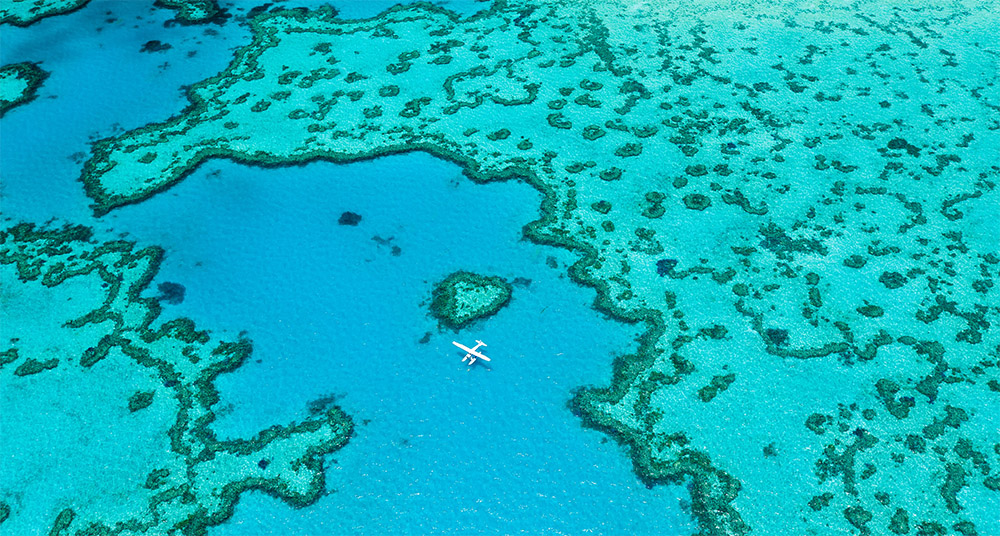
If they’re longer, they can also incorporate somewhere like Uluru, which I mentioned before in the center of the country, and then other regional destinations. As I said, the Whitsundays is tropical islands off the Great Barrier Reef and you can snorkel, island hop, have a champagne brunch at Whitehaven Beach, there’s so many ways to enjoy the reef. Flying over it and cruises, that sort of thing.
In Cairns in the Port Douglas region—that’s a rainforest destination. And again, you can enjoy the reef in many different ways and also the rainforest up there. So those are options. I want to make sure that you know about Uluru, as I said it’s a spiritual heart of Australia. You can learn about indigenous culture through activities like painting, bush tucker tastings and tours of Uluru. You can attend the dinners that I mentioned previously. Sounds of Silence, Tali Wiru. There are lots of options out there to really learn about the Aboriginal culture.
Another place is Tasmania, Australia’s southernmost island state. It’s a little island off the southernmost coast of Australia. And it’s made up of incredible landscapes. It’s just beautiful. Almost a fifth the state is World Heritage-listed. It’s home to Hobart, the capital city of Tasmania, which has renowned distilleries and wineries.
It’s also home to a cultural icon that is called MONA. That’s the Museum of Old and New Art. It’s an unconventional, mostly subterranean museum. And it’s constantly reinventing itself. I really encourage people to check it out. It’s an absolutely amazing experience. And, during COVID, they offered a new dining experience at one of the restaurants called Faro Experience and opened up parts of the closed museum to private groups. So, lots to explore down in “Tassie,” as well.
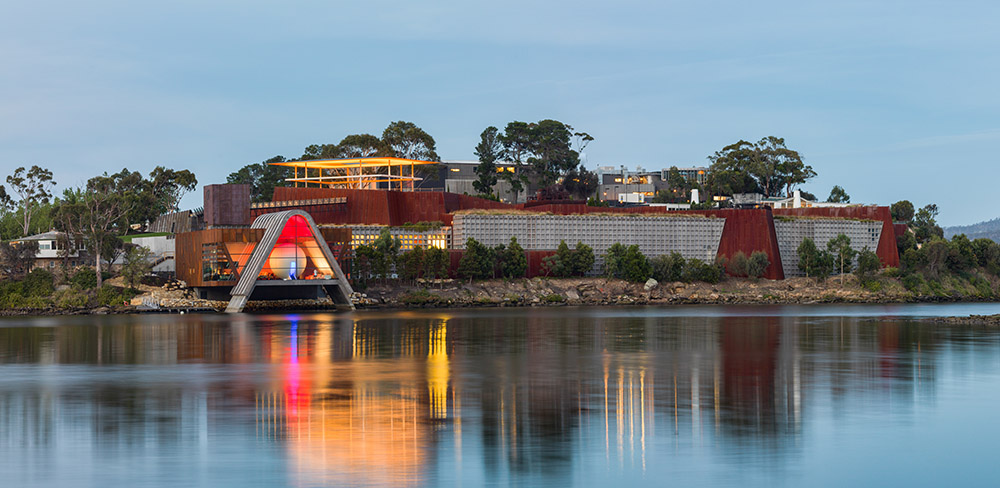
Danielle: Yeah. Like you said, each area of Australia, whether you’re in north, south, east, west or central, there is something new and exciting to explore and a lot of bucket list items, especially I think, for North American-based attendees coming for an incentive trip. To add to that, maybe you can just talk a little bit more about the ease of getting to some of these places? There’s a lot of direct flights now from the U.S. to the big cities, like Sydney and Melbourne. And the Great Barrier Reef is really not that far away, correct?
Mary Ann: No, that’s right. The domestic airline network within Australia is extraordinarily good. It’s a large country. You do have to fly places because of that, because of the distances of the country, but the domestic network is very good. You fly into a gateway city from the U.S., and remember it’s an overnight flight, usually, from L.A. to the east coast of Australia, anywhere between 13, 14 or 15 hours depending on headwinds and which actual city you go into. It’s quite an easy flight. I did it for 30 years!
So when you get there, regional destinations, whether it’s the reef out to a rural route to another capital city, or regional destinations, it’s very easy. The network’s very good in Australia.
Danielle: Yeah. And when international travel is possible again, and flights are at full capacity. That kind of connectivity, like you said, is really accessible and really easy.
Mary Ann: Yeah, absolutely.
Danielle: Well, that is all we have time for today. Thank you so much, Mary Ann, for sharing your knowledge and expertise with us. It’s always a pleasure speaking with you.
Mary Ann: Oh, you’re welcome. It was a pleasure. And thank you so much. It’s great to chat, Danielle.
Danielle: If any of you listening want to learn more, you can reach out to Mary Ann directly. We will put her contact information on our website. Also, if you want to keep diving into more content and learning more about the possibilities for incentives in Australia, definitely check out that Australia Next magazine. We will include that link on our website as well at meetingstoday.com.
And finally, if you liked this episode, you can tune into more Meetings Today podcasts by subscribing on Apple Podcasts, Spotify, or wherever you get your favorite podcasts. Thanks for listening!
[End transcript]
About Our Guest
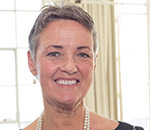
Mary Ann McDonald is Tourism Australia’s Business Events Manager for the America’s specializing in incentives. A dual Australian and U.S. citizen, she lived in Australia for three decades, in Brisbane and Cairns, one of the gateways to the Great Barrier Reef.
While in Australia, she worked in sales, bidding and management roles in hotels, convention centers and convention bureaus. She joined Tourism Australia’s regional office in Los Angeles in February 2018.
Listen now: Australia Next: New Properties and Incentive News From Australia’s Crystalbrook Collection



